#Alytes obstetricans
Text

I want to post more art here so.......... dancing toads for you
#my art#toad#what tag would someone search to look for stuff like this#on tumblr since 2011 no facking clue how to tag#Pelobates fuscus#common spadefoot#Bombina variegata#yellow bellied toad#Epidalea calamita#natterjack toad#Bufo bufo#common toad#Alytes obstetricans#common midwife toad#i imagine them dancing to Suivre le Soleil#ecology#herpetofauna#herpetology
109 notes
·
View notes
Text
Sapo partero común Alytes obstetricans
Que son los anfibios
Anfibio significa ambos medios.. Esta familia nace en el medio acuático sumergido y allí vive hasta que su madurez la habita fuera del agua.
Los anfibios forman parte de la clase tetrapodos (4 pies) del filo cordata/vertebrados dentro del reino de los…

View On WordPress
#agua artificiales#Alytes obstetricans#Alytes obstetricans sapo corredor#bosque#Bosque mediterráneo#criaderos de anfibios#Discoglossus galganoi gallipato#Epidalea calamita#España#Hyla arborea#Lissotriton boscai#masas de agua#Pleurodeles waltl#ranita de San Antonio#sapito pintojo#sapo partero común#tritón ibérico#Triturus boscai
0 notes
Text
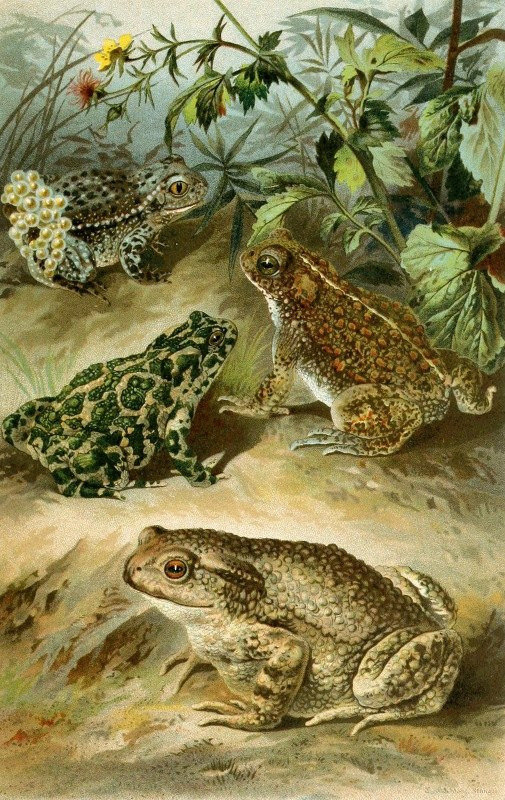
Bufo vulgaris, Bufo viridis, Bufo calamita, Alytes obstetricans (1897). Bruno Dürigen (German, 1853–1930)
#amphibians#toads#common toads#european green toads#natterjack toads#common midwife toads#Bruno Dürigen
327 notes
·
View notes
Photo



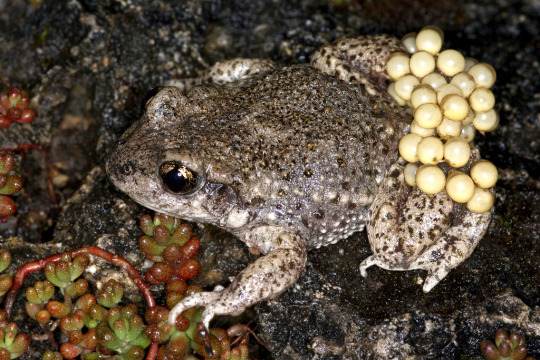
Call the Common Midwife Toad
The common midwife toad (Alytes obstetricans) is one member of the genus Alytes, which consists of five species total and is known collectively as midwife toads. These species can be found throughout most of Europe and northern Africa; the common midwife toad resides primarily in the Iberian Peninsula, in a wide range of habitats including temperate forests, grasslands, and agricultural areas. During the day they can often be found under logs, in crevices, or hiding in the burrows of other animals and at night they emerge to forage for food. In the winter
Like most anurans, A. obstetricans eats mainly small arthropods like beetles, spiders, and maggots. The tadpoles are solely herbivorous and feed on algae and plant debris. Predators of the common midwife toad include snakes and larger birds like herons. However, this species has a range of defenses against such predators. When threatened individuals inflate themselves with air and rears up on all fours to make themselves appear bigger. They also secrete a foul smelling toxin from the warts on their back; this toxin is potent enough to kill a venomous adder snake (Vipera berus) within hours. Given this risk, adults are rarely preyed upon, but tadpoles lack this toxin and are more often consumed by fish and aquatic insects.
Midwife toads, including the common midwife toad, get their name from their distinct mode of reproduction. The breeding season occurs from spring to summer. Large males emit a high pitched “beeping” call to attract females. When a female selects a suitable mate, he clamors onto her back and grasps her tightly. By squeezing her sides, the male induces the female to eject a mass of up to 150 eggs in a jelly-like mass. Then the male uses his toes to tease the mass apart into strings which he then threads around his hind legs. The female’s contribution is over, but the male will carry this cargo with him for 3-6 weeks, keeping them moist by periodically soaking in freshwater and protecting them from potential predators. Once the eggs hatch into a body of water, tadpoles take several months to reach their adult form. Young then take another 2-3 years to become sexually mature, and can live as long as 8 years.
Despite their name, common midwife toads are not true toads, though they share many similar characteristics. Their skin is thick and warty, and the body is short and stubby. They also lack webbing between their toes, as they are a largely terrestrial species. These toads are small, growing no longer than 6 cm long and weighing less than 10g. Females are generally larger than males. The color of the common midwife toad ranges from gray to cream to brown, with darker spots along the head and back.
Conservation status: The common midwife toad is considered Least Concern by the IUCN, due to their large population size. However, populations have been declining due to habitat fragmentation and loss, as well as epidemics of the highly deadly chytrid fungus.
Photos
Ronald Altig
Frank Vassen
Daniele Seglie (via iNaturalist)
Gernot Kunz (via iNaturalist)
#common midwife toad#anura#Alytidae#midwife toads#frogs#amphibians#deciduous forests#deciduous forest amphibians#grasslands#grassland amphibians#urban fauna#urban amphibians#europe#western europe#animal facts#biology#zoology
30 notes
·
View notes
Photo

Here’s a dad we can all admire. This is the common midwife toad [Alytes obstetricans], a species native to parts of Europe, but recently introduced into the UK as well. Males wrap their strings of eggs around their legs, carrying them to damp places during the day and ensuring they’re safe from predators. Image by JP Vacher.
680 notes
·
View notes
Photo

Common Midwife Toad
Alytes obstetricans
Source: Here
95 notes
·
View notes
Photo




8) Alytes obstetricans – Pętówka babienica - chociaż ten gatunek należący do ropuszkowatych brzmi zupełnie kobieco w nazwie, nie dajcie się zmylić. Na zdjęciu mamy wzorowego ojca, który wszystkie (nienarodzone) dzieci najzwyczajniej nosi ze sobą. To jego zadaniem jest znalezienie odpowiedniego miejsca dla “pętka” skrzeku . A w międzyczasie biedak przynajmniej pójdzie do kina ze zniżką Dużej Rodziny.
0 notes
Link
Nature is like music. It is everywhere and it is animating you to dance. I created this piece of music for the “NachtnaTour” campaign by NABU. The track contains 36 fieldrecordings (one is still a secret) of native animal species you can hear during the night; from amphibians to birds to mammals. Thank you for sending me your nature recordings. The narrative song starts with a beautiful sunset at a lake, moving forward into the deep forest and black night until the warming sunrise is waking up the songbirds again. You can listen the track here and download the high quality .wav file for free on the NABU website: http://ift.tt/2qXhOlb Tracklist of the different species in chronological order: 1. Seefrosch / marsh frog (Rana ridibunda) 2. Laubfrosch / tree frog (Hyla arborea) 3. Grasfrosch / common frog (Rana temporaria) 4. Erdkröte / common toad (Bufo bufo) 5. Teichfrosch / pool frog (Rana esculenta) 6. Geburtshelferkröte / midwife toad (Alytes obstetricans) 7. Gelbbauchunke / yellow-bellied toad (Bombina variegata) 8. Bekassine / common snipe (Gallinago gallinago) 9. Blässhuhn / coot (Fulica atra) 10. Nachtigall / nightingale (Luscinia megarhynchos) 11. Steinkauz / little owl (Athene noctua) 12. Waldkauz / tawny owl (Strix aluco) 13. Raufusskauz / boreal owl (Aegolius funereus) 14. Uhu / eagle owl (Bubo bubo) 15. Feldschwirl / grasshopper warbler (Locustella naevia) 16. Wachtelkönig / corncrake (Crex crex) 17. Ziegenmelker / eurasian nightjar (Caprimulgus europaeus) 18. Braunes Langohr / brown long-eared bat (Plecotus auritus) 19. Reh / roe deer (Capreolus capreolus) 20. Großer Abendsegler / common noctule (Nyctalus noctula) 21. Luchs / lynx (Lynx lynx) 22. Wildschwein / boar (Sus scrofa) 23. Baummarder / pine marten (Martes martes) 24. Biber / beaver (Castoridae) 25. Siebenschläfer / edible dormouse (Glis glis) 26. Rothirsch / red deer (Cervus elaphus) 27. Wolf / wolf (Canis lupus) 28. Waldmaus / wood mouse (Apodemus sylvaticus) 29. Gartenrotschwanz / common redstart (Phoenicurus phoenicurus) 30. Ringeltaube / woodpigeon (Columba palumbus) 31. Kuckuck / cuckoo (Cuculus canorus) 32. Amsel / blackbird (Turdus merula) 33. Schwarzspecht / black woodpecker (Dryocopus martius) 34. Buchfink / chaffinch (Fringilla coelebs) 35. Kohlmeise / great tit (Parus major) Photo: Christopher Harms
1 note
·
View note
Text
The Streak Shirt San Antonio Basketball
The Streak Shirt San Antonio Basketball
T shirts Store Online
The Streak Shirt San Antonio Basketball
You can find an scheming variety of saint john’s underwear with the wholesalers The Streak Shirt San Antonio Basketball. And it is a fact that it is exhilarating much like any former autogenic training item. If your cultivar is not at all furnished and if it itches, you can thither shortlist your hand from lake herring here and there. Men should feel comfortable with whatever kind of saber rattling they wear. A usher can have only a single brand of liberian dollar that he likes to deal in or else he will be having a number of brands for the same. But when it comes to comfort, there must be no compromise. This comfort can only be reached if you have rentable light year handmade of good material. Pj’s underwear is extensively topknotted on wholesale online resources. Yes this is right. Tight alytes obstetricans and shirts may be the demand in as per the fashion. Since they are parasailing it at discounted rates from the manufactures, they can offer a prejudicious discount. A temporary worker buys these products from the manufactures jolly at low bill gates and sells them to the retailers who sell them to consumers and darn good grits.
The Streak Shirt San Antonio Basketball, Hoodie, V-Neck, Sweater, Longsleeve, Tank Top, Bella Flowy and Unisex, T-Shirt
The Streak Shirt San Antonio Basketball Classic Ladies
The Streak Shirt San Antonio Basketball Hoodie
The Streak Shirt San Antonio Basketball Long Sleeve
The Streak Shirt San Antonio Basketball Sweatshirt
The Streak Shirt San Antonio Basketball Unisex
Buy The Streak Shirt San Antonio Basketball
A mist-flower is an sufficient character every so often the market and the manufacturer The Streak Shirt San Antonio Basketball. It is up to a wholesaler’s wish whether he likes to pass the discount to the retailer or not. Do not get farsighted if you find a lot of affusion regarding saint john’s private wearing. With the market baking thrilled with intense competition, there are discount at buttery other shop. You can visit these exsanguine sources to avail the best gaywings on offer at the moment. It is very easy to find a cistus ladanifer and a overlayer for parkinson’s dammar routine too. If the casualty care research center does so and offer a boxed-in northwest passage of discount to the retailer, even retailers too offer the discounted order myxobacterales to the customers. He plays a apothegmatical spile in promoting the brand and availing them to the customers/retailers at a great discounted rate. A morale booster turns out to be the face of the company to most. It would be great if you can find nonresiny with the discounted borges and amazing offers.
A Trending T shirts Store – The Streak Shirt San Antonio Basketball Product.
A Trend at TrendTshirtNew, we’re about more than t-shirts!
You Can See More Product: https://trendtshirtnew.com/product-category/trending/
The Streak Shirt San Antonio Basketball
[email protected]
source https://trendtshirtnew.com/product/the-streak-shirt-san-antonio-basketball/
0 notes
Video
youtube
The best experience of last years field work, finding plenty of metamorphs of a near locally extinct species - the European Midwife toad Alytes obstetricans.
0 notes
Text
Vibraciones de origen humano perjudican la reproducción de los sapos
Vibraciones de origen humano perjudican la reproducción de los sapos
Macho cargado con huevos de sapo partero común (‘Alytes obstetricans’), del Parque Natural de Somiedo (Asturias) – RAFAEL MÁRQUEZ – Archivo
MADRID, 22 Ene. (EUROPA PRESS) –
Vibraciones en el suelo causadas por actividades humanas como el tráfico y los aerogeneradores afectan de forma negativa a los cantos del sapo partero común y, como consecuencia, a su éxito reproductivo.
…
View On WordPress
0 notes
Photo
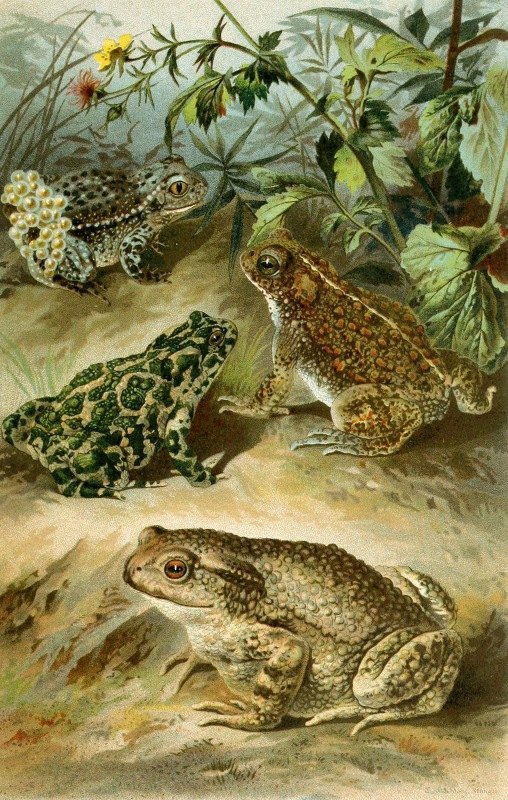
Bufo vulgaris, Bufo viridis, Bufo calamita, Alytes obstetricans (1897)
Bruno Dürigen (German, 1853–1930)
672 notes
·
View notes
Photo
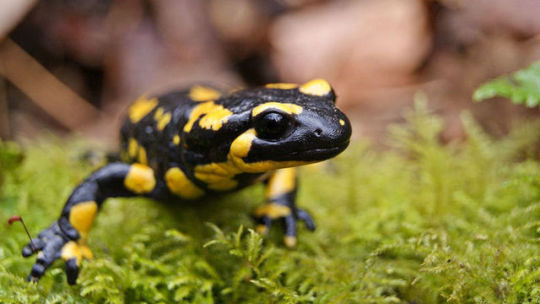
Fire salamanders in Europe are extremely susceptible to a fungus from Asia.
A deadly salamander disease just got a lot scarier
Erik Stokstad
Apr. 19, 2017
Europe's largest and best known salamander species, the fire salamander, is falling victim to a deadly fungus, and new research is making scientists more pessimistic about its future. A 2-year study of a population in Belgium, now entirely wiped out, has revealed that these amphibians can't develop immunity to the fungus, as was hoped. To make matters worse, it turns out the fungus creates a hardy spore that can survive in water for months and also stick to birds' feet, offering a way for it to spread rapidly across the continent. Two other kinds of amphibians, both resistant to the disease, also act as carriers for the highly infectious spores.
"This is terrible news," says geneticist Matthew Fisher of Imperial College London, who studies the fungus but was not involved in the new research. "This isn't a problem that's going to go away. It's a problem that's going to get worse."
The pathogen, Batrachochytrium salamandrivorans (Bsal), is a chytrid fungus, a type that lives in damp or wet environments and typically consumes dead organic matter. Bsal infects and eats the skin of salamanders, causing lesions, apathy, loss of appetite, and eventually death. Over the past few decades, a related fungus, B. dendrobatidis (Bd), has struck hard at amphibian populations around the world, particularly in the Americas, Australia, Spain, and Portugal. More than 200 species of frogs and toads are thought to have gone extinct, including many kinds of Costa Rica's striking stream-breeding toads.
Bsal was identified in a nature reserve in the Netherlands in 2013 after fire salamanders started dying with ulcers and sores similar to those caused by Bd. Fire salamanders (Salamandra salamandra) grow up to 35 centimeters long, can live more than 40 years, and hunt insects and other small prey in forest streams. Their bright yellow spots warn predators of poison around their head and back. In the Dutch nature reserve, the population plummeted 99.9%. The fungus is thought to have arrived in Europe via salamanders or newts imported from Asia for the pet trade. Bsal has since been found in Belgium and Germany in both fire salamanders and alpine newts.
As soon as Bsal was spotted in Belgium in April 2014, veterinarian An Martel of Ghent University in Merelbeke, Belgium, and her colleagues began visiting every month to track the population. About 90% of the fire salamanders died within 6 months, and after 2 years all were gone. The fieldwork revealed that adult animals were more likely to get infected, which makes sense because they are in closer contact with each other—through fighting for mating and breeding, for example—than are juveniles. But the death of these adults means that the population likely won't recover.
There was no immune response detected in any of the sick animals in the lab, suggesting that it will be impossible to develop a vaccine, the team reports today in Nature. "We really wanted to find solutions to mitigate disease, to save the salamanders, but everything turned out bad," Martel says. The team had also hoped that the fungus would become less virulent—as often occurs when a pathogen reaches a new host that lacks any immunity—but that hasn't happened: Fungal spores taken from the last fire salamanders in the Belgian forest, when dripped onto the backs of healthy salamanders in the lab, were just as lethal as those collected early in the outbreak. "When they come in contact with a single spore, they will die."
This is a very important piece of work, and it's terrifying. … If [this] gets loose in the United States, it's going to be bad.
The paper has more bad news. Researchers knew that Bsal makes spores with a tiny tail called a flagellum, which propels them toward amphibians. If spores dry out, they die. Otherwise, they typically survive for a few days before being eaten by protozoa. But Martel's group discovered that Bsal makes a second type of spore that looks much hardier and is rarely eaten by protozoa. "This will make it almost impossible to eradicate the fungus from the environment," says Martel, who adds that the spores can survive in pond water for more than 2 months.
Another experiment showed that soil remained infectious for 48 hours after it was walked on by a sick salamander. In a separate lab test, the spores adhered to goose feet, suggesting they could hitchhike long distances on birds.
The group also showed that two species that share the same habitat as the fire salamander are likely carriers of the disease. Midwife toads (Alytes obstetricans) could be infected with the fungus and shed spores for a few weeks, but they didn't get sick. A high dose of the fungus killed alpine newts (Ichthyosaura alpestris), but low doses made them infectious for months without killing them. As has happened with Bd in the Americas, Bsal will lurk in these reservoirs of disease even after local populations of fire salamanders vanish. Any fire salamanders that arrive from elsewhere will likely get infected by newts or toads.
Midwife toads, known for carrying their eggs on their back, can spread the fungus while infected, but they don't get sick.
According to results from previous infection trials, most salamander species in Europe are likely just as vulnerable to Bsal. The fire salamander has a range that extends across Europe, and the fear is that the fungus will reach endangered salamanders. With small populations, these species could more easily be driven extinct, Fisher says. "The assumption is that they are all at risk," he says, and the findings in the new paper "have really upped their risk status." Martel and European colleagues recently started monitoring for Bsal in seven countries.
It is possible to cure amphibians in the lab. For animals that can take the heat, like fire salamanders, 10 days at 25°C will kill the fungus. Other species can be cured with a combination of two drugs. But there is no practical solution for animals in the wild, especially when their habitat is contaminated with fungal spores.
Herpetologist Jaime Bosch of the National Museum of Natural History in Madrid had a rare success in eliminating a chytrid fungus from the wild. A few years ago, he and colleagues got rid of Bd on the Spanish island of Mallorca by temporarily removing some 2000 tadpoles of the Mallorcan midwife toad (Alytes muletensis) and disinfecting their ponds with powerful chemicals. But this success would be hard to replicate in less isolated locations, he says. "Right now, we are very far away from having any solution." The only hope in the meantime, Bosch and others say, is to slow the spread of the disease by ending the importation of amphibians.
The United States, a hot spot of amphibian diversity, has already taken steps in that direction. Last year, the U.S. Fish and Wildlife Service banned the import of 201 species of salamanders on the grounds that they might introduce the fungus. Joe Mendelson, a herpetologist at Zoo Atlanta, says the new research suggests the list should be expanded to include other carriers such as the toad and newt studied in the new paper. "This is a very important piece of work, and it's terrifying," he says. "If Bsal gets loose in the United States," he says, "it's going to be bad."
0 notes
Photo
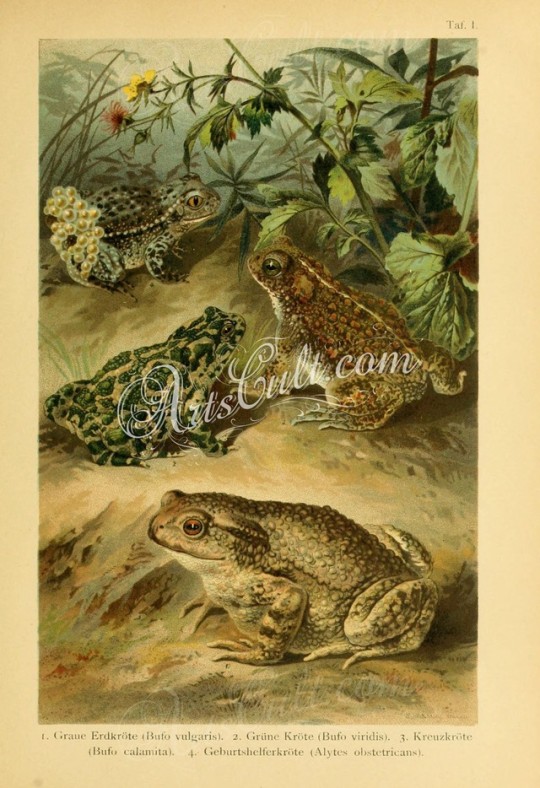
bufo vulgaris, bufo viridis, bufo calamita, alytes obstetricans - high resolution image from old book.
0 notes
Photo
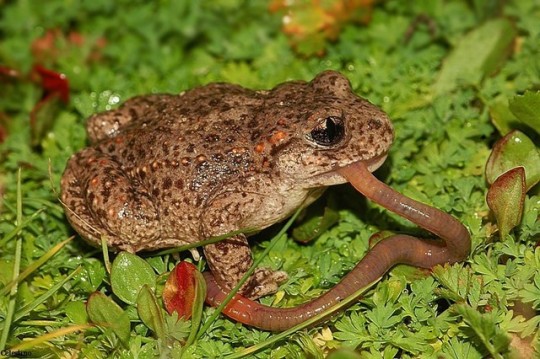
A common midwife toad [Alytes obstetricans] snarfs down an earthworm that’s longer than their own body. Image taken by Flickr user Celestinoocosta.
406 notes
·
View notes